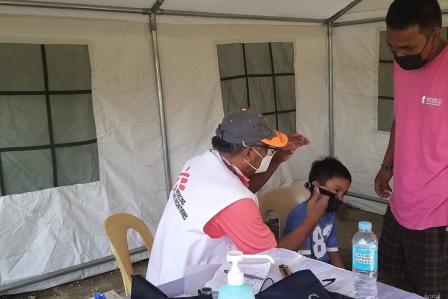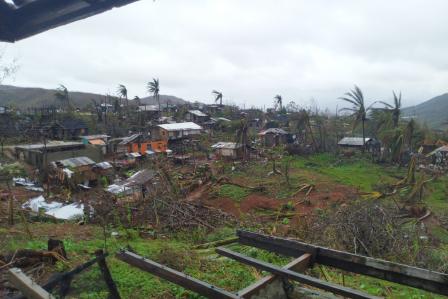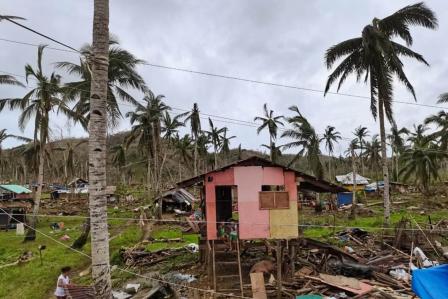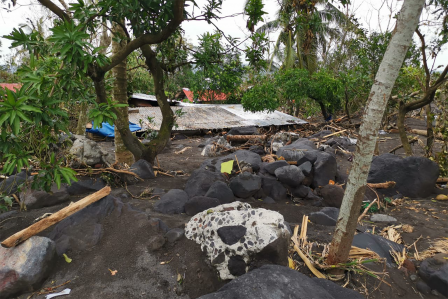Typhoon Rai Response: Voices from the Field
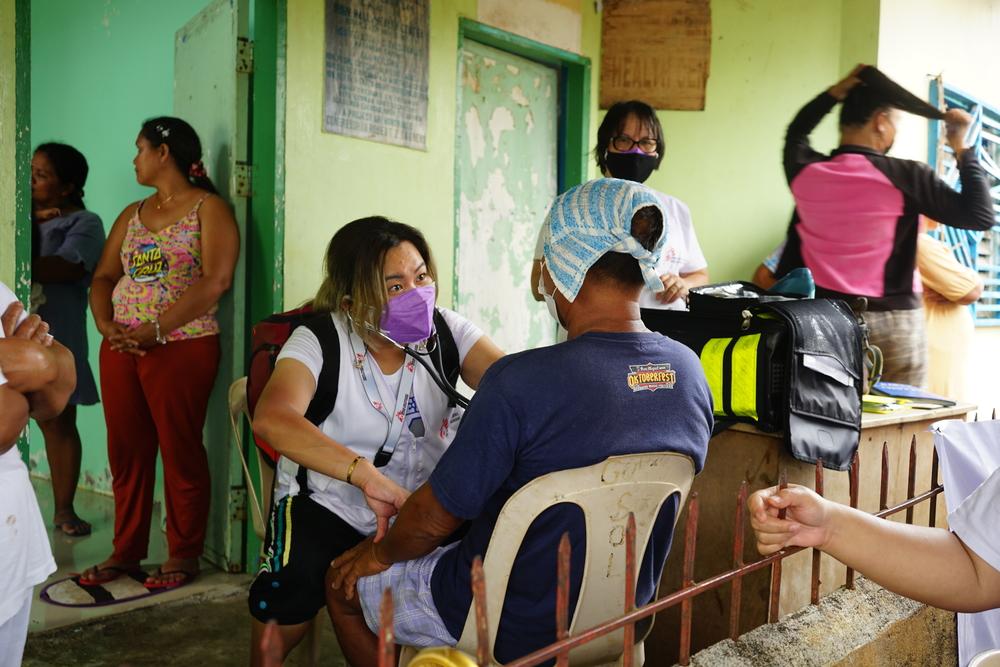
Survivors and Doctors Without Borders / Médecins Sans Frontières (MSF) staff share their stories about the impact of Typhoon Rai (locally known as Odette) in some of the most affected areas in the Philippines.
“How can we bounce back from this?”
Marie Kris Yurtes is the secretary of Barangay* Catadman, in Surigao City.
Before the storm, the Department of the Interior and Local Government sent a message saying Super Typhoon Odette (international name: Rai) would be coming on 16 December. They said we should get ready, and there would probably be strong winds and big waves.
So on the morning of the 16th, I went around the whole village. I told people that whoever wanted to evacuate should go to our church, because that’s the highest point. The school, which was our usual evacuation centre, was near the sea.
By noon the wind was getting stronger. With such strong winds it felt like there was tornado, so my husband and I moved our three children to the church. When we arrived, there were around 30 families there already.
We saw two mango trees fall down on our street. We saw roofs flying off houses, falling to the ground. It looked like the hurricane had peeled the roofs off the houses. The winds were so strong that even as we were walking, it felt like the wind would pick us up. At the church, we saw that someone had been wounded. They had been hit by a metal sheet that had blown off from someone’s roof.
We went to check on our house, my husband said it was gone, it had fallen apart. I looked at other houses, and they were gone too.
We returned to the church, and the winds shifted, suddenly coming from the south. About two hours of winds, so strong that it damaged our church's roof.
The sea water almost reached the church. We couldn't do anything but pray. We slept there because we had no home to go to anymore. We didn't eat that night because nobody could make rice. The next morning, we went to where our homes had been and put together makeshift shelters.
Since the storm, there is nothing else we can do but look at our house and see how we’re going to fix it. Whatever we can save, we fix. What we can’t, we throw away. Our clothes all got wet and we just have to wash them so we have something to use.
Thank God nobody died in this area. Some people were sick, but it was mostly just colds, coughs. We just used herbal medicine to treat it because it's a long way to the city. The health centre was destroyed. We haven't been able to repair it yet because we've been working on our own homes first.
It’s been a month since the storm, and we think about how we can recover. It's just so hard. My salary as a secretary is not enough. Sometimes we think, how can we bounce back from this? Our relatives sent help, and we were able to put a roof over our heads. But it's so hard. Instead of adding to our home, we now have nothing, our house was totally damaged. We're just thankful that many people sent food. We've recovered a little bit. But the pain of homelessness, that's what we feel.
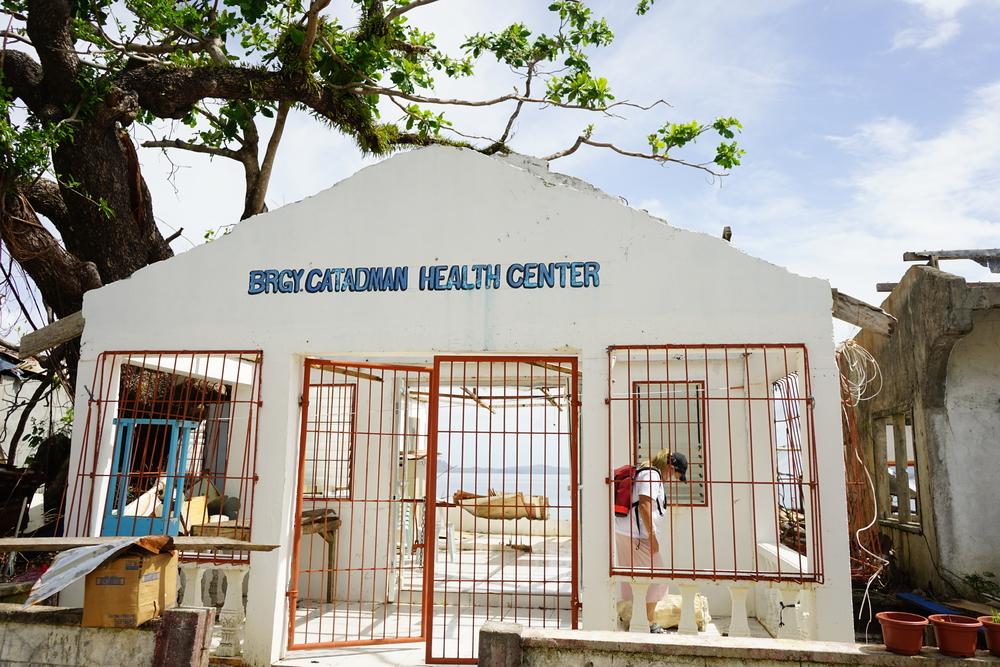
All that remains of the barangay health center are a few walls, a rusty weighing scale and a damaged examination bed. The roof was blown away by Typhoon Rai (local name Odette). Barangay Catadman, Surigao City, Philippines. 22 January, 2022. © Regina Layug Rosero/MSF
“We have to count 10 years again before we can harvest anything”
Queencel Catulay is a farmer from Barangay Sugbay, in Surigao City.
I've seen a big hurricane before, Typhoon Nitang in 1984. People have learned what happens when we’re hit by a hurricane that's extremely strong. Our neighbours, they ended up in the mangroves. And there were others in the fishpond, dead. We really hoped Odette (international name: Rai) would not be a repeat of Nitang.
I thought we were all going to die. Very strong winds, and the waves were just so huge. But we all helped each other.
As early as three days before the storm, the Barangay captain and I went from house to house, telling people to evacuate. Some people didn't want to leave their homes, their livelihood, and their animals. We really tried to persuade them to go to the evacuation centre. We really hoped we wouldn’t lose a single person in our village.
I was really scared because I saw the wind coming in at the evacuation centre. Then there was another gust of wind, and it was as if they were clashing. It was like the winds would pick up the building we were in. We got a rope and tied it to the building, so everyone could hold on.
Everyone was crying and some people said, someone was missing. So we went out to rescue them. We were soaking wet. Some people, tree branches fell on them, but we helped each other. There was a woman who looked like she was about to give birth. We were scared because we don’t know how to help with childbirth.
The flood, the seawater, it must have been three metres high at the evacuation centre. I said Lord, please have mercy, please save us. Never mind if we lose everything as long as not one of us dies. I'm so grateful because no one died. But I really cried because one of my children got separated from me. I thought if we're going to die, then we will die together, all of us.
The next day when I looked around the village, it was like a ghost town. Everything has fallen apart, especially our health centre and our school, as if the storm carried it away. Not one piece of the roof was left, even the walls, nothing is left.
Here in Sugbay, we have 172 families. We’re farmers. We plant cassava, coconut. But now, the coconut trees won’t grow. How will the farmers survive? They have to start from nothing. Coconut trees have to grow 10 years before you can harvest. We have to count ten years again before we can harvest anything.
Some, like my husband, live off the sea. How can we live if we don’t have boats? We lost our nets, our fish cages. We couldn’t save anything. We have nothing we can use at sea. The loan on the boat isn't paid off yet. Now I don’t know how we're going to pay. If we could have even just one boat and nets it would be a big help.
I am thankful, despite everything that happened, because some help came in: rice, canned food, hygiene kits.
We need help to repair our facilities especially the health centre and our bridge.
No one died here, thank God. Nobody was lost, nobody even got sick, among everyone who evacuated.
Our elderly neighbours, I feel really sorry for them. Just today, an elderly woman fell on the road, because it was too slippery. This happens when it's always raining.
But we can still cope, even with all the difficulty. We can't lose hope.
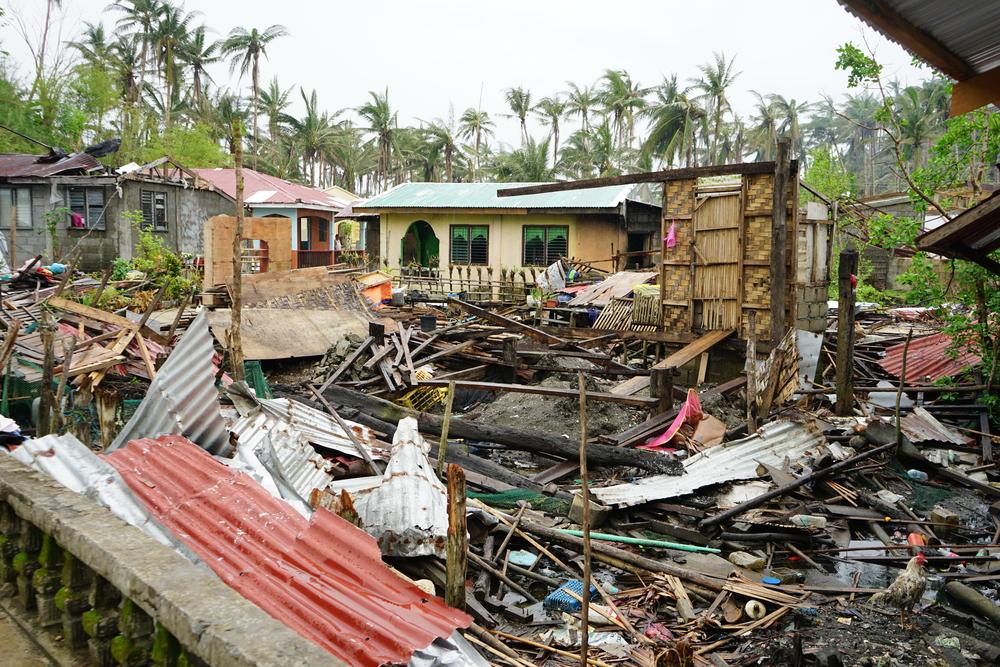
Typhoon Rai (local name Odette) left many homes like this: in pieces of wood and metal sheets, scattered everywhere. A few homes that were built with cement and concrete remained standing, but did not escape unscathed; often roofs, ceilings and windows sustained much damage. Brgy. Cagutsan, Surigao City, Philippines, 23 January, 2022. © Regina Layug Rosero/MSF
“It is very challenging to access to a lot of areas”
Dr Chenery Ann Lim is Doctors Without Borders' emergency coordinator responding to Typhoon Rai
It is very challenging to access a lot of the areas here. We're not just talking about difficulties in the weather. We need boats to go from one island to the other. Sometimes the big boat cannot go in because the islands are too small. So we have to hire smaller boats.
Sometimes when we go to the islands, we’re the first medical team that they’re seeing. Sometimes a lot of patients have upper respiratory tract infections. We have seen some with gastroenteritis, others who need maintenance drugs. A lot of their medications were lost because their houses are gone. It's so difficult for them. So we are providing free healthcare services and free medication.
Doctors Without Borders has been conducting mobile clinics and distributing hygiene kits. During the medical consultations, we screen children for malnutrition.
In the hospitals, there is a lack of healthcare personnel, because they were also affected by the storm. So we have some Doctors Without Borders medical staff in one of the district hospitals, to help ensure that health services continue.
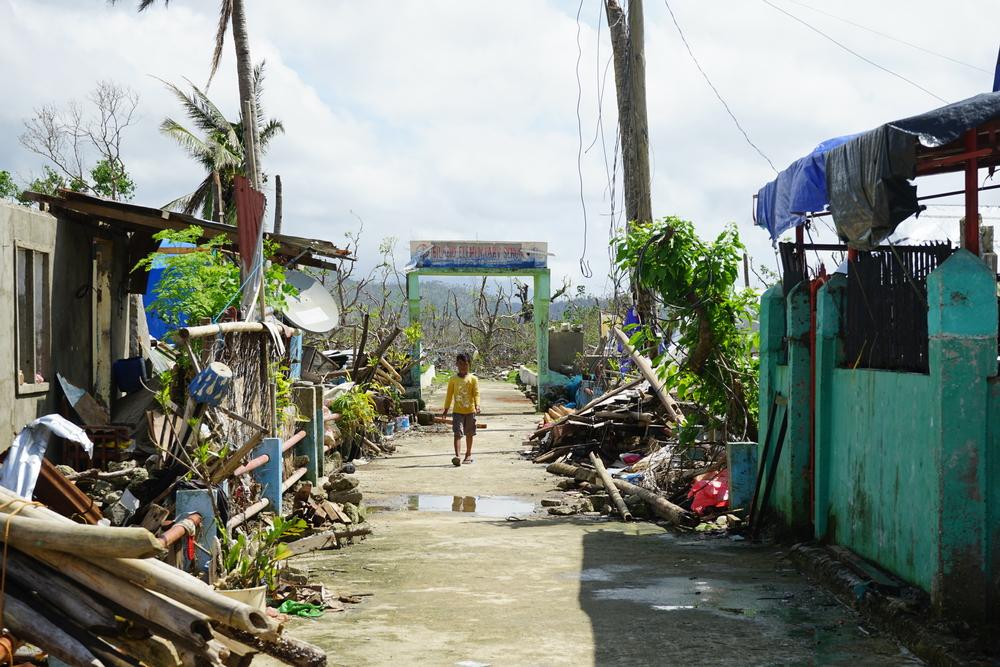
A boy walks from the entrance of Bilabid Elementary School. The street is littered with debris from the houses destroyed by Typhoon Rai (local name Odette). Brgy. Bilabid, Surigao City, Philippines, 26 January, 2022. © Regina Layug Rosero/MSF
“It was like they would all get washed away and carried to the middle of the sea”
Jonathan Pillejera is an Doctors Without Borders logistician
When we first came here, we saw how the storm had devastated the entire island. As soon as the boat docked, we could see where the trees had fallen on the mountain, the houses that were broken up, the streets full of debris. It was still raining and it was so hard to find boats that would sail from Surigao to Dinagat. Only a few commercial vessels were traveling, and they were all full.
The roads in Dinagat are on an incline, so the water really comes down and then the roads at the foot of the hills are all underwater. Even the bao-bao transport systems (three-wheelers) can’t move around. There are areas that can’t be cleared right away.
We visited different villages to assess their health facilities. Almost everything was destroyed, and really not usable, especially in the coastal areas. Basilisa is one of the most badly damaged areas, with more than 50 per cent of the houses destroyed. In Cagdianao, there’s a village called Boa, where it took more than a week before anybody could go there. One hundred per cent of the houses were damaged. People don't have much left.
Whatever we do, we make sure it’s coordinated properly with local government officials and the provincial health offices.
While we were conducting our assessment in the coastal village of Laguna, the Barangay captain cried because he really didn't expect that to happen to his entire village. The houses were totally wiped out. He said it was like they would be swallowed whole by waves that were four meters high. Their evacuation centre was at the top of the mountain and they watched as their houses were pounded by winds, battered by large waves. It was like they would all get washed away and carried to the middle of the sea.
*Barangay is the smallest administrative unit of government in the Philippines.
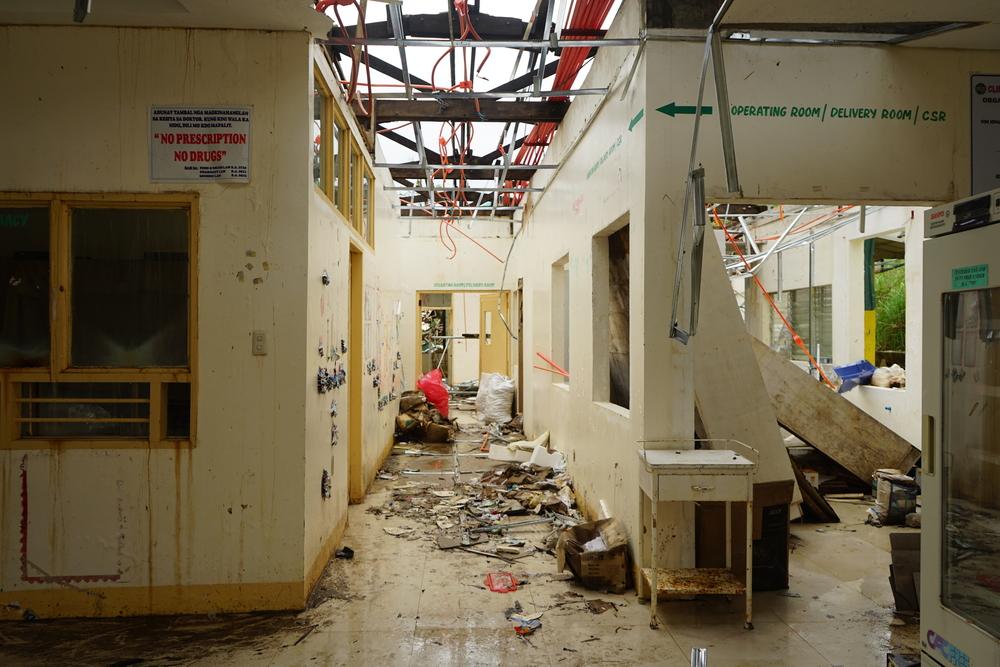
The Dinagat District Hospital sustained much damage. With the roof torn apart by Typhoon Rai (local name Odette), the rains and the strong winds destroyed the operating rooms, the pharmacy, and most of the equipment and supplies. Dinagat District Hospital, Philippines, 24 January, 2022. © Regina Layug Rosero/MSF

